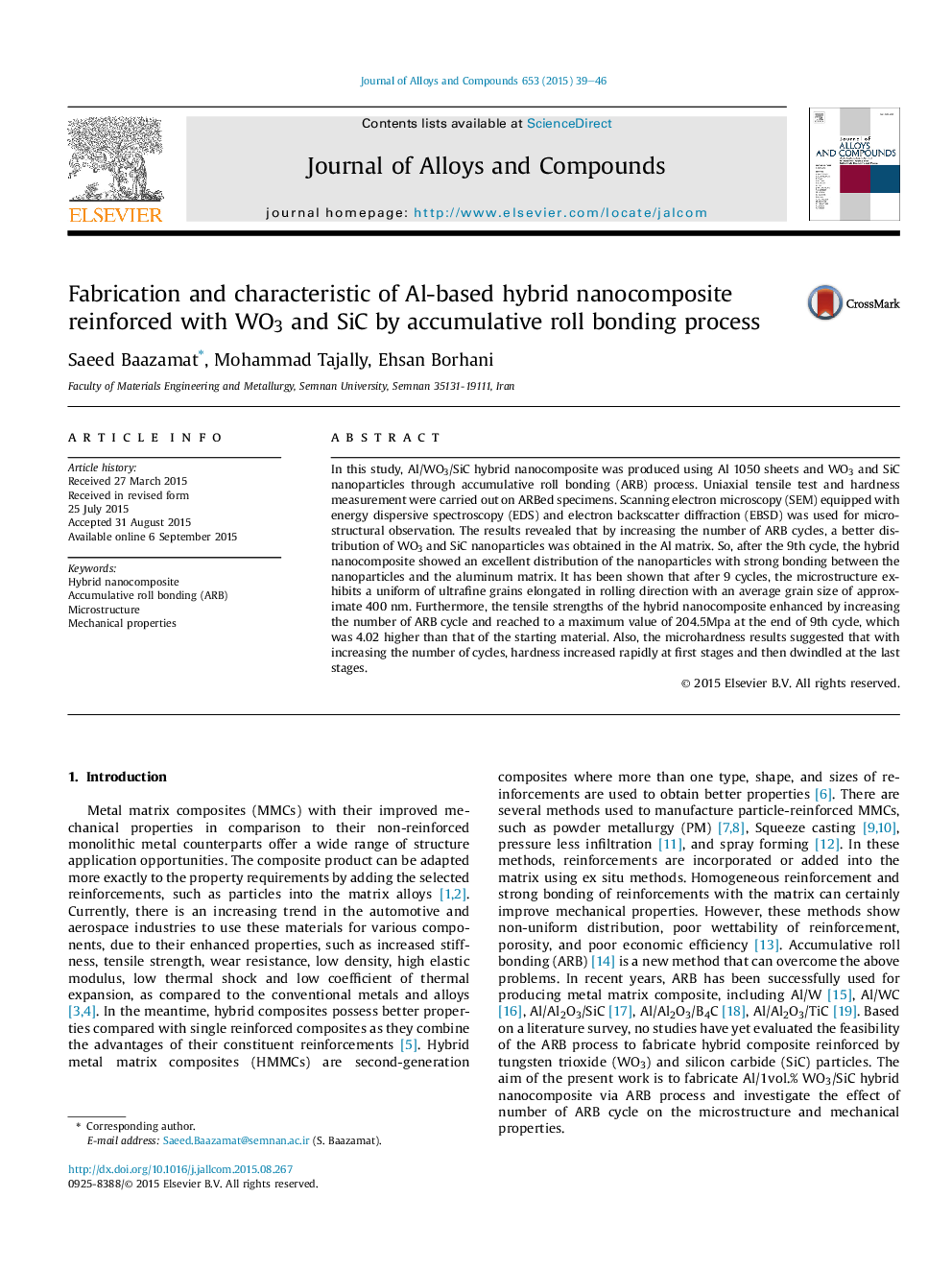| Article ID | Journal | Published Year | Pages | File Type |
|---|---|---|---|---|
| 1607512 | Journal of Alloys and Compounds | 2015 | 8 Pages |
•With no. of ARB cycles, The uniformity of nanoparticles in the Al matrix improved.•After 9 cycles the microstructure exhibits an uniform of ultrafine grains elongated in rolling direction.•The tensile and yield strengths of hybrid nanocomposite increased with the number of ARB cycles.•The nanocomposite exhibited higher hardness due to work hardening and grain refinement.
In this study, Al/WO3/SiC hybrid nanocomposite was produced using Al 1050 sheets and WO3 and SiC nanoparticles through accumulative roll bonding (ARB) process. Uniaxial tensile test and hardness measurement were carried out on ARBed specimens. Scanning electron microscopy (SEM) equipped with energy dispersive spectroscopy (EDS) and electron backscatter diffraction (EBSD) was used for microstructural observation. The results revealed that by increasing the number of ARB cycles, a better distribution of WO3 and SiC nanoparticles was obtained in the Al matrix. So, after the 9th cycle, the hybrid nanocomposite showed an excellent distribution of the nanoparticles with strong bonding between the nanoparticles and the aluminum matrix. It has been shown that after 9 cycles, the microstructure exhibits a uniform of ultrafine grains elongated in rolling direction with an average grain size of approximate 400 nm. Furthermore, the tensile strengths of the hybrid nanocomposite enhanced by increasing the number of ARB cycle and reached to a maximum value of 204.5Mpa at the end of 9th cycle, which was 4.02 higher than that of the starting material. Also, the microhardness results suggested that with increasing the number of cycles, hardness increased rapidly at first stages and then dwindled at the last stages.
